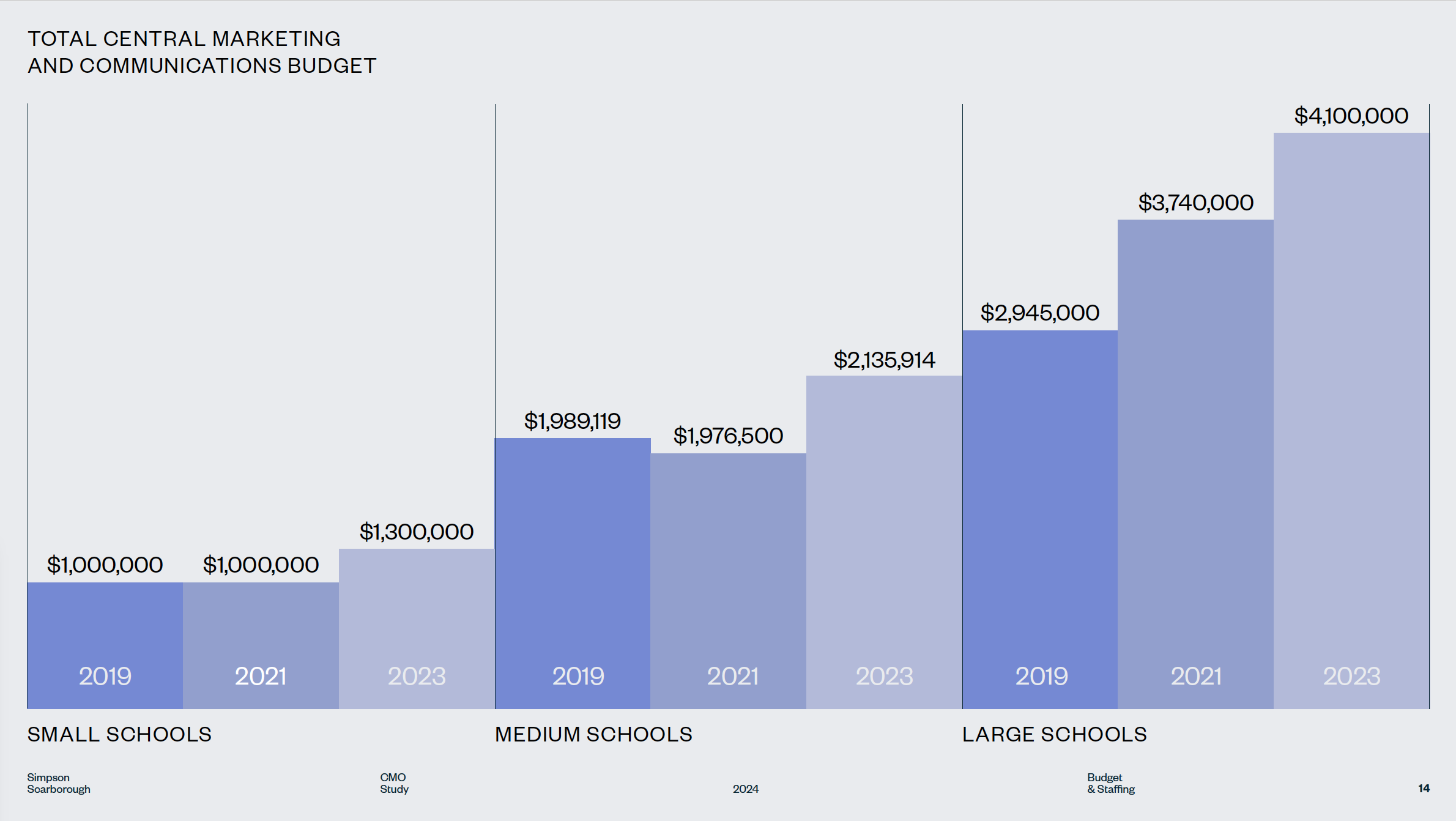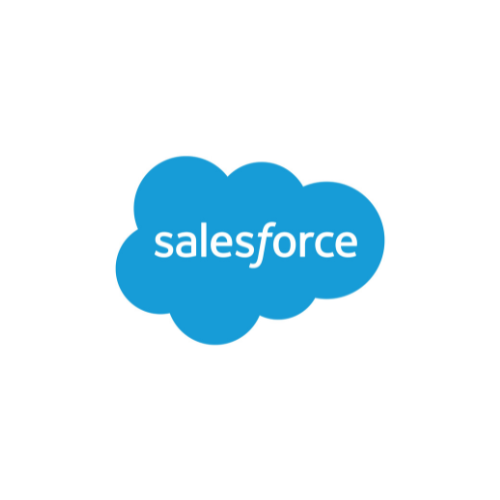How Can Universities Create an Effective Higher Education Marketing Budget?
By Morgan Northmore, Digital Marketing Coordinator at Noetic Marketer. Morgan specializes in crafting digital content and social media strategies that help higher education institutions connect with prospective undergraduate students and drive enrollment.
Key Takeaways:
Higher Education Marketing Budgets Vary Widely: Depending on the institution's size, average annual marketing budgets range from US$500,000 to US$4M.
Higher Education Marketing Is Competitive: Top universities invest tens to hundreds of millions annually in marketing (e.g., Purdue University spent over US$140M in 2023).
Strategic Planning Is Essential: Effective budgets align with institutional goals and follow a six-step process: set goals, define audiences, benchmark, allocate funds, plan ahead, and monitor/adjust.
Understand Key Budget Components: Advertising (PPC, social, content), branding (UX/UI, campus experience), agencies/freelancers, and software tools (CRM, email, SEO, analytics) form the foundation of a successful budget.
Maximize ROI: Prioritize high-ROI channels, test small budgets before scaling, integrate CRM with analytics, and maintain a 10–15% contingency for flexibility.
Measure Full-Funnel Performance: Track top-of-funnel (traffic/awareness), middle-of-funnel (leads/inquiries), and bottom-of-funnel (applications/enrollments, CPE) metrics to optimize spending and demonstrate value.
Why a Marketing Budget Matters for Higher Education Institutions
Marketing budgets are no longer optional for universities and other educational institutions as they’re essential for:
Resource allocation: Ensures limited funds are used strategically.
Accountability: Makes it easier to report ROI to boards, donors, or leadership.
Scalability: Enables growth without overspending.
Proactive planning: Anticipates seasonal or campaign-specific needs.
Without a structured budget, marketing efforts can become reactive, scattered, and difficult to measure, all things you want to avoid.
What Is the Average Marketing Budget for Higher Education Institutions?
According to the 2024 report by UPCEA (the Online and Professional Education Association) that surveyed online and professional continuing-education units, the benchmarks were:
Average annual marketing budget: US$1.18M
Median annual marketing budget: US$644,000
As a percent of unit revenue: average 11.9%, median 5.3%
These numbers provide a helpful starting point or anchor, but remember: they apply to PCO units, which may include fully online programs, continuing education, or professional development tracks.
Traditional nonprofit colleges/universities that rely on tuition, grants, endowments, or state funding may not match this profile exactly. For example, a Simpson Scarborough survey of 268 institutions showed that as of 2023:
Small schools (<3,000 FTE students) averaged US$1.3M in marketing budget
Medium schools (3,000-12,000 FTE students) averaged US$2.1M in marketing budget
Large schools (12,000+ FTE students) averaged US$4.1M in marketing budget
Therefore, depending on the size of your institution, you should budget for roughly US$500,000 to US$4M in annual marketing spend to remain competitive and visible amongst your peers.
Which Universities Are Spending the Most on Marketing?
Several universities have become notable for their significant marketing investments, highlighting the value they place on building brand awareness and reaching potential students.
According to the 2024 EducationDynamics Benchmark Report, the universities spending the most on marketing (Nov 2022–Oct 2023) include:
Purdue University — US$140.99M
Walden University — US$80.45M
University of Phoenix — US$77.04M
Arizona State University (ASU) — US$53.09M
Southern New Hampshire University (SNHU) — US$50.27M
These figures demonstrate that top-tier higher education institutions are investing tens to hundreds of millions of US dollars annually in media advertising to compete for prospective students.
What Are the Key Components to Include in a Marketing Budget?
Understanding the components of a marketing budget is crucial for effective management and achieving the best results. The key areas to account for include advertising, branding, specialized help, and necessary software tools.
1. Advertising
Your advertising plan allows you to genuinely connect with prospective students across multiple channels and formats.
Content marketing: This can include anything from insightful blog posts about student life to e-books on choosing the right course to engaging videos about your campus culture. Content marketing helps establish your institution as an authority, giving potential students more reasons to choose you over others.
Social media advertising: Platforms like Facebook, Instagram, LinkedIn, Snapchat, and TikTok have become important places to engage prospective students. But beyond regular posts and updates, these platforms offer paid advertising options that can significantly extend your reach.
Social media management: This involves regular posts, quick replies to comments and queries, and engagement with other content. While this may seem like a lot of work, it can significantly boost your institution's visibility and reputation.
Email marketing: A well-crafted email can deliver your message to potential students' inboxes. This strategy is ideal for sharing detailed information about courses, success stories, upcoming events, or even a friendly nudge to complete an application process.
Pay-per-click (PPC): PPC ads can help increase your visibility, particularly for competitive search terms. For example, a PPC ad could ensure your institution appears at the top of the results when a student searches for "best online engineering degree programs."
2. Branding
Branding plays a pivotal role in distinguishing your institution from others in the academic landscape. It encompasses the total experience potential students have with your institution, both online and offline.
Branding includes your website's user experience (UX) and user interface (UI), the voice and tone of your communication, and real-world experiences at open houses or campus tours.
Effective branding creates powerful, positive perceptions that attract students and influence their enrollment decisions.
3. Agencies and Freelancers
When planning ambitious campaigns or adjusting strategies, the workload may exceed your in-house team’s capacity, making external resources necessary.
Higher education digital marketing agencies: Specialized higher education marketing agencies bring a deep understanding of the higher education landscape, prospective students' behaviour, and effective marketing tactics in the sector.
Freelancers: Offer an option to enhance your marketing efforts through specific projects like graphic design, content creation, or social media management.
4. Software
Software tools are critical for executing, managing, and tracking your marketing campaigns, helping to ensure you reach your goals.
With multiple channels and formats, your advertising plan is where you can genuinely connect with prospective students. Here's a bit more insight into what each advertising method entails.
Email marketing software helps streamline and automate email communications. Tools like ActiveCampaign allow you to create customized email templates, automate campaigns based on specific triggers, and segment your audience for targeted messaging. For example, potential students at different stages of the application process might receive customized emails, ensuring each message is relevant and timely.
Search engine optimization is a critical component of digital marketing, helping your institution's website rank higher in search engine results and increase visibility. SEO tools, like Surfer SEO, provide data-driven insights to optimize your content for search engines. It can help identify the best keywords to target, suggest content improvements, and track your website's SEO performance over time.
Crafting compelling copy is vital to engaging prospective students. Copywriting tools, such as Jasper, can help generate high-quality, SEO-friendly content for your marketing efforts. These tools can provide suggestions to improve readability, keyword usage, and overall content quality.
From prospective leads to enrolled students to alumni, CRM implementation helps higher-ed institutions manage relationships and data throughout the full student lifecycle. Platforms such as Salesforce Education Cloud allow institutions to centralize all data (inquiries, applications, enrollment status, communications, alumni info), track and automate communications (emails, reminders, follow-ups), and get a 360-degree view of each individual’s interactions and history. This makes recruitment, admissions, enrollment, student engagement, retention, and alumni outreach much more efficient and data-driven.
Managing multiple social media channels can be complex. Tools like Hootsuite allow you to schedule posts, track engagement, analyze audience behaviour, and optimize campaigns from a single dashboard.
Understanding campaign impact is essential. Google Analytics 4 (GA4) measures conversions, tracks ROI, and provides dashboards to analyze which campaigns drive enrollments, helping teams make data-driven decisions.
Paid advertising platforms help target audiences effectively and optimize spend. Google Ads enables programmatic ad delivery, bid optimization, audience segmentation, and performance tracking to align ad spend with recruitment goals.
Recruitment events and webinars require seamless organization. Tools like Eventbrite manage registration, send reminders, track attendance, and integrate with CRMs to support follow-ups and lead nurturing.
How Do Higher Education Marketing Budgets Benchmark and Allocate Funds?
Understanding established benchmarks helps institutions create realistic, data-driven, and fiscally defensible budgets.
What Is the Recommended Sample Allocation for Higher Education Institutions?
A strategic budget must distribute funds across the critical functions required for full-funnel recruitment.
Paid advertising & media buys: 25-35% (search, social, display, and programmatic advertising)
Content creation: 15-18% (blogs, videos, social media content)
Tools & software: 8-10% (Salesforce, Hootsuite, Surfer SEO)
Staff & agencies: 20-30% (in-house salaries, external support from agencies and/or freelancers)
Creative production: 5-10% (ongoing content refreshes)
Tip: Adjust percentages based on strategic goals (e.g., heavily focus on paid advertising if the primary goal is rapid lead generation for a new program).
How Do Budget Scenarios Differ by Institution Size?
Budget scenarios are often tiered, allowing institutions to scale their investment with their organizational size and ambition.
Paid advertising & media buys:
Small institutions (US$1.3M budget): 28% = $364,000
Medium institutions (US$2.1M budget): 32% = $672,000
Large institutions (US$4.1M budget): 35% = $1,435,000
Content creation:
Small institutions (US$1.3M budget): 18% = $234,000
Medium institutions (US$2.1M budget): 18% = $378,000
Large institutions (US$4.1M budget): 18% = $738,000
Tools & software:
Small institutions (US$1.3M budget): 10% = $130,000
Medium institutions (US$2.1M budget): 9% = $189,000
Large institutions (US$4.1M budget): 8% = $328,000
Staff & agencies:
Small institutions (US$1.3M budget): 30% = $390,000
Medium institutions (US$2.1M budget): 28% = $588,000
Large institutions (US$4.1M budget): 25% = $1,025,000
Creative production:
Small institutions (US$1.3M budget): 10% = $130,000
Medium institutions (US$2.1M budget): 10% = $210,000
Large institutions (US$4.1M budget): 10% = $410,000
Small institutions often focus limited spending on high-converting channels (e.g., SEO and Google Ads) and outsource specific expertise to higher education agencies. Larger institutions can allocate more budget to multi-channel digital ads, video production, and extensive experimentation while retaining more in-house staff.
How Do You Create a Higher Education Marketing Budget?
To create a higher education marketing budget, you must follow a six-step process, starting with strategic planning and ending with continuous monitoring.
Step 1: Understand your institution’s goals
Before seeing a return on your investment, you must outline your institution's goals. Your budget should directly support these goals, whether you are trying to boost enrollment in online, continuing education, or other programs.
Step 2: Define your target audience
Figure out who your prospective students are. Understanding your target audience —whether they are high school students, enrolled students seeking executive education, or adult students interested in online education programs—is key to effective targeting and an efficient use of your budget.
Step 3: Benchmark against similar institutions
Chief marketing officers can benefit from understanding what colleges and universities of similar size and scope are spending on marketing. Studying what other universities spend can give you a realistic perspective on your budget and possible results.
Step 4: Allocate funds to different marketing channels
Digital advertising is a cost-effective channel for higher education institutions, so you should allocate a significant portion of your budget here. Balancing your digital and conventional marketing efforts is crucial for reaching both prospective college students graduating from high school and those interested in continuing education.
Step 5: Plan for the future
A well-structured budget should consider future opportunities and changes. You should budget in advance for significant expenditures, such as planning a marketing and branding campaign or preparing to be the official education partner at a higher education marketing conference, to avoid going over budget at the last minute.
Step 6: Monitor and adjust
The landscape of education marketing is constantly evolving, so you must stay adaptable. Monitor your marketing efforts and adjust your spending to maximize effectiveness. Utilizing marketing technology can provide significant advantages for this continuous adjustment.
How Is ROI Measured and Tracked in Higher Education Marketing?
Tracking ROI requires alignment between marketing activities and revenue-driving institutional outcomes.
What Key Metrics Should I Track?
Effective measurement moves beyond vanity metrics (e.g., likes) to track metrics tied to the enrollment funnel:
Top-of-funnel (awareness): Website traffic, engagement, branded search volume.
Middle-of-funnel (conversion): Leads/inquiries, application starts, cost-per-Inquiry (CPI).
Bottom-of-funnel (revenue): Applications, enrollments, cost-per-enrollment (CPE).
Pro Tip: CRM integrations often reduce the cost-per-enrollment (CPE) more effectively than simply increasing ad spend. For instance, advanced optimization by Noetic Marketer for one client resulted in a 125% increase in domestic applications while achieving a cost-per-lead 65% below the industry average.
What Are the Common Budget Challenges and Pitfalls?
Institutions face internal and external challenges that can derail even the best-laid plans.
In our experience, marketers in the higher education sector often face budget constraints. These financial limitations can hinder your access to marketing tools, limit your reach on paid advertising platforms, and affect the quality of your marketing materials. This issue is one of the biggest challenges in higher education digital marketing.
Here are some challenges and how to overcome them.
Limited budget & staff: Prioritize high-ROI channels (e.g., PPC for niche graduate programs); leverage specialized agencies to maximize efficiency.
Unpredictable funding: Plan flexible budgets with a 10–15% contingency buffer for unforeseen needs.
Marketing perceived as non-essential: Consistently use ROI metrics (CPE, ROAS) to demonstrate measurable value to leadership.
Overspending on low-impact channels: Test small budgets first and scale only the winning campaigns based on data-driven insights.
Data fragmentation: Mandate CRM-to-analytics seamless integration to ensure full-funnel tracking and accurate ROI calculation.
Optimize Your Higher Education Marketing Budget
Implementing new marketing strategies requires careful planning and a budget strategically allocated to maximize ROI. We offer customized, full-service higher education marketing services that will fill your pipeline with quality prospects and applications without wasting your ad spend.
Book a free, no-obligation consultation with our education marketing experts to discuss your marketing budget and ad spend allocation today.
Don’t miss our other posts on higher education digital marketing.
What Are 11 Valuable Strategies for Recruiting International Students?
What Are 9 Proven Strategies for Marketing Higher Education to Adults?
What Makes Student Testimonials Crucial for University Recruitment Marketing?
How Can Universities Use Video Content to Boost Student Recruitment?
What Are 5 Effective Marketing Strategies for Recruiting Undergraduate Students?
How Can Universities Use AI for Marketing?
What Are the 7 Key Challenges in Higher Education Digital Marketing and How Can They Be Solved?
Key Higher Education Marketing Terms
Digital Marketing: A strategic marketing approach focused on creating and distributing valuable, relevant, and consistent content to attract and retain a clearly defined audience.
Key Performance Indicators (KPIs): Specific, measurable metrics that align with marketing goals and are used to track the performance and success of campaigns (e.g., website traffic, cost-per-lead, enrollment numbers).
Pay Per Click (PPC): A digital advertising model where an advertiser pays a fee each time one of their ads is clicked.
Return on Investment (ROI): A performance measure used to evaluate the efficiency or profitability of an investment, comparing the revenue generated against the amount spent.
Search Engine Optimization (SEO): The practice of optimizing a website's content and technical setup to improve its visibility and ranking in organic (non-paid) search engine results.
Content Marketing: A strategic marketing approach focused on creating and distributing valuable, relevant, and consistent educational content (like blog posts, videos, and e-books) to attract and retain a defined audience.
Social Media Advertising: The practice of running paid campaigns on social platforms (like Meta, LinkedIn, or TikTok) to significantly extend reach beyond organic posts and target specific audience segments.
Email Marketing: A direct marketing strategy that uses email to share detailed program information, success stories, and application reminders with prospective students to guide them through the admissions funnel.
Branding: In higher education, this refers to the total experience and perception a potential student has of an institution, encompassing its logo, communication tone, website experience (UX/UI), and core values.
User Experience (UX): The overall experience of a person using a product such as a university website, specifically focusing on how easy and pleasant it is to navigate and find information.
User Interface (UI): The visual components, design elements, and interactive features of a website (like buttons, images, and layout) that a user interacts with.
CPE (Cost per Enrollment): Cost to enroll a student; used to measure ROI of campaigns.
CPI (Cost per Inquiry): Cost to generate a prospective student inquiry.
ROAS (Return on Ad Spend): Revenue or value generated per dollar spent on advertising.
MQL (Marketing Qualified Lead): Prospective student ready to be passed to admissions.CRM (Customer/Constituent Relationship Management): System to track student interactions and communication.
Lead Nurturing: Guiding prospective students through the enrollment funnel via automated communications or content.
Conversion Funnel / Enrollment Funnel: Stages from awareness → interest → application → enrollment.










